New York, New York. What a wonderful town. But pretend it’s a city.
Fran Lebowitz is a writer, cultural commentator, and public speaker, known for her sharp wit and even sharper observations about New York life. Since the 1970s, she’s been a fixture of the city’s cultural scene, often called the “quintessential New Yorker.”
“Pretend it’s a city,” Fran Lebowitz prescribes as advice to those either living in or visiting New York City. Looking at your phone while walking down the street, riding a bicycle whilst eating a slice of pizza, and talking on the phone with the other hand — control yourselves and pretend it’s a city. Fran Lebowitz is not only iconic and humorous, she also recently featured in the documentary Pretend It’s a City, directed by her longtime friend Martin Scorsese.
The Netflix series, which I highly recommend, sees Fran navigating New York’s streets and chatting with Scorsese about her observations on life as a New Yorker and as a human more generally.
I went a couple of nights ago to see Fran Lebowitz on tour, which coincided with the paperback release of her book The Fran Lebowitz Reader — a collection of her essays and writings from over the years.
I’ve seen her before too, and one thing always strikes me. Apart from how funny she is and how clever her writing is, she is also impeccably dressed. I’ve done some research into what she wears and where those clothes come from, and there are some great anecdotes worth sharing. I think we can all learn from Fran, not just about how to be a better human, but how to dress as well.
I had once read that Fran only owns about six outfits in total, which she rotates. It turns out that’s not strictly accurate. In a conversation with the fashion scholar Valerie Steele, Fran mentioned that she didn’t have enough suits to lend one out for six months. Steele then remarked that the Berlin Film Museum had “about six of her outfits,” but she was referring to Marlene Dietrich’s wardrobe, not Lebowitz’s. Still, the idea resonates: Fran doesn’t need a vast collection of clothes. What she proves is that you can build a wardrobe around a few key pieces, rotate them, and still look effortlessly stylish.
That philosophy comes through in some of her best stories. When Levi’s stopped making their 501 jeans in the US, she phoned the company and asked if she could buy about fifty pairs to last her the rest of her life. She never heard back, as she recounted in an interview with L’Étiquette. It’s a brilliant story, and it sums up her outlook: invest in quality, stick with what works, and don’t compromise just because the market shifts.
Her shirts tell the same story. For years, she bought them from Brooks Brothers, until they discontinued the cotton shirt she liked. That change was enough to lose her loyalty, and she’s said so openly in Elle. It’s a reminder that when you find a brand or a cut that suits you, it’s worth holding onto.
And then there are her suits. Lebowitz has long said that Anderson & Sheppard make the best. When she first approached them, she was turned away. “The first time I asked Anderson & Sheppard to make me a suit, they said no. I believe it was not specific to me — they said they didn’t make clothes for women … The only exception they’d made, in their entire history, was Marlene Dietrich,” she told the Financial Times. She persisted, though, and one of the first things they eventually made for her was an evening suit. As she explained in L’Étiquette, “One of the first things I had made was an evening suit, because back then, if you wanted to wear a suit for black tie, and you were a woman who’s 5 ft 4 in, you were out of luck, because they were impossible to find off-the-rack.”
Over the years, she has collected a handful of jackets from Anderson & Sheppard, each with its own story. She once recalled, “I have two jackets that I was told each time not to get. One is a green-and-blue striped wool jacket … The other is a summer jacket … pistachio green … … they’re two of my favourites … and I never wear them without people asking me where I got them.” Those words, again from the Financial Times, show how her taste veers toward the bold, even within the confines of a strict “uniform.”
Since then, Anderson & Sheppard has become central to her style, their jackets with broad shoulders and a slightly oversized cut forming part of her signature look alongside Levi’s jeans and cowboy boots.
Her style is often described as “uniform-like.” What people really mean, without always realizing it, is that her clothes are memorable. The uniform comes not from repetition alone, but from the fact that she’s chosen pieces so iconic — the dark jacket, the 501s, the boots, the oversized shirt — that they imprint themselves in people’s minds. Fran knows what works for her, and by sticking to it, she’s made herself one of the most stylish figures in New York.
So, what can we learn from Fran?
I think the main one is this: don’t compromise on quality. It’s worth fighting for what works for you, what looks good on you, and what you actually enjoy wearing. Fran isn’t afraid of doing that.
Another lesson is not to overdo your wardrobe. Find those staples that make you happy, pieces you genuinely like, and ask yourself why you like them. That way you end up with clothes that really reflect you, rather than a collection that just fills space.
Just as Fran tells us to pretend it’s a city, her style tells us to pretend it’s simple: get the essentials right, repeat them with confidence, and you’ll never look out of place.
⸻
Sources
• Fran Lebowitz on Levi’s and tailoring, L’Étiquette: https://letiquette.com/en/blogs/articles-magazine/fran-lebowitz
• Fran Lebowitz on Brooks Brothers shirts, Elle, March 24, 2015: https://www.elle.com/fashion/personal-style/interviews/a27447/fran-lebowitz-style-interview
• Fran Lebowitz on Anderson & Sheppard suits, Financial Times: https://www.ft.com/content/17b39323-0188-481f-881c-b16e6f528cd8



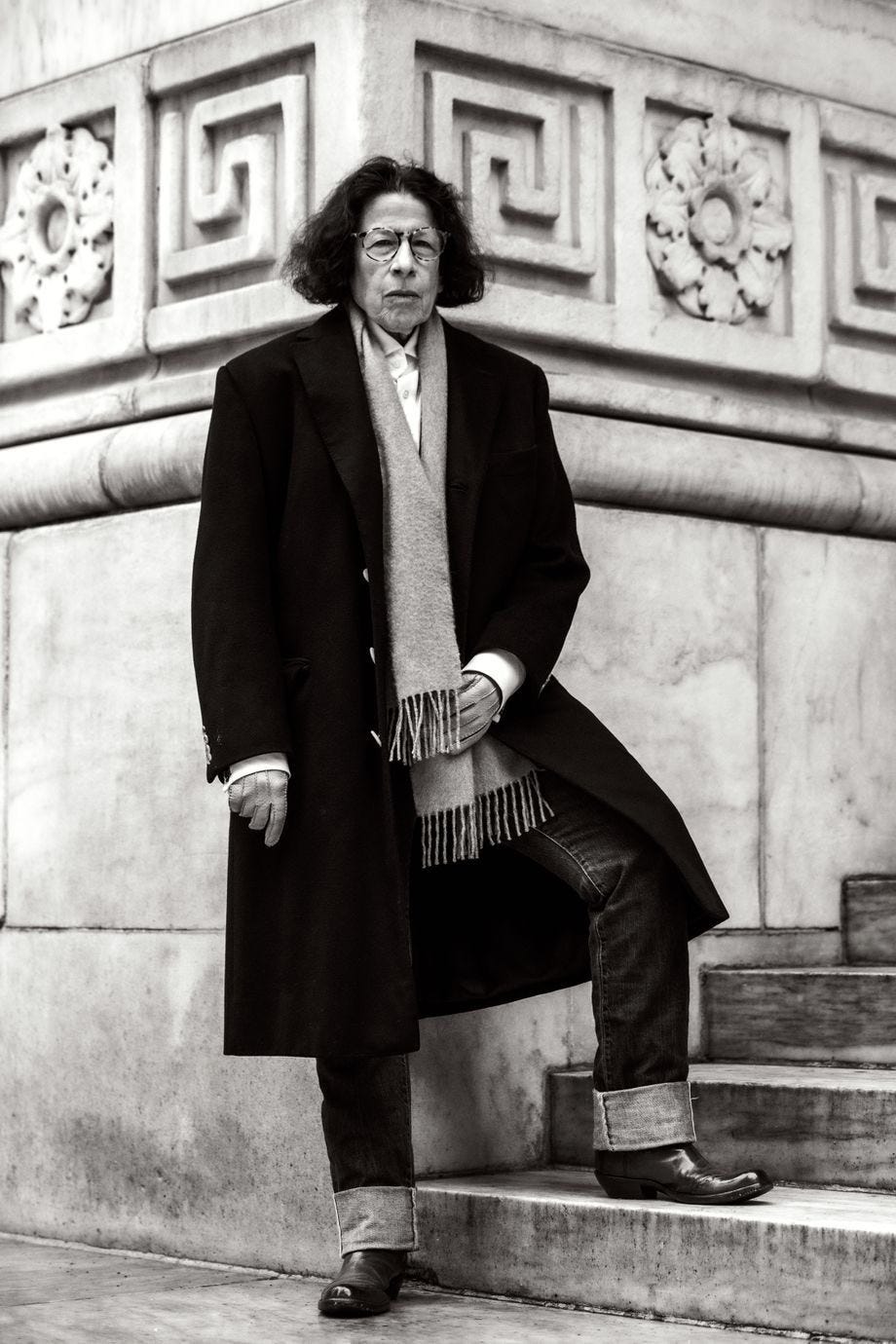
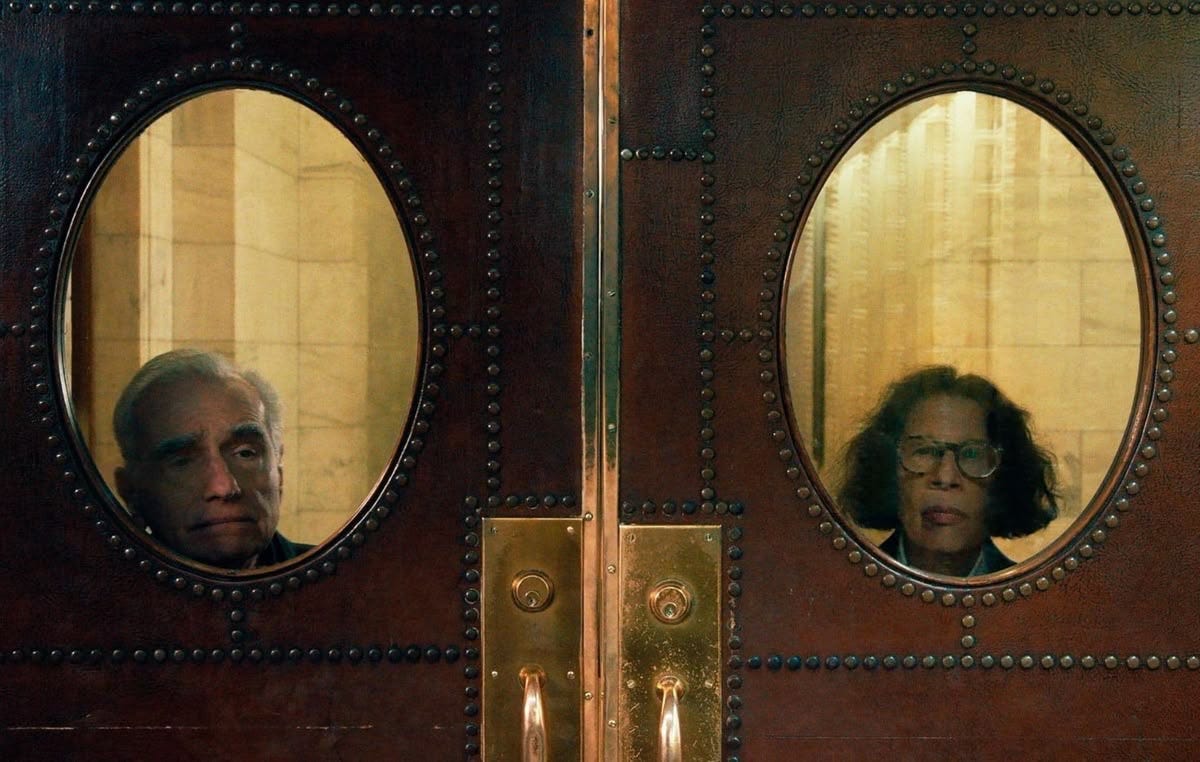
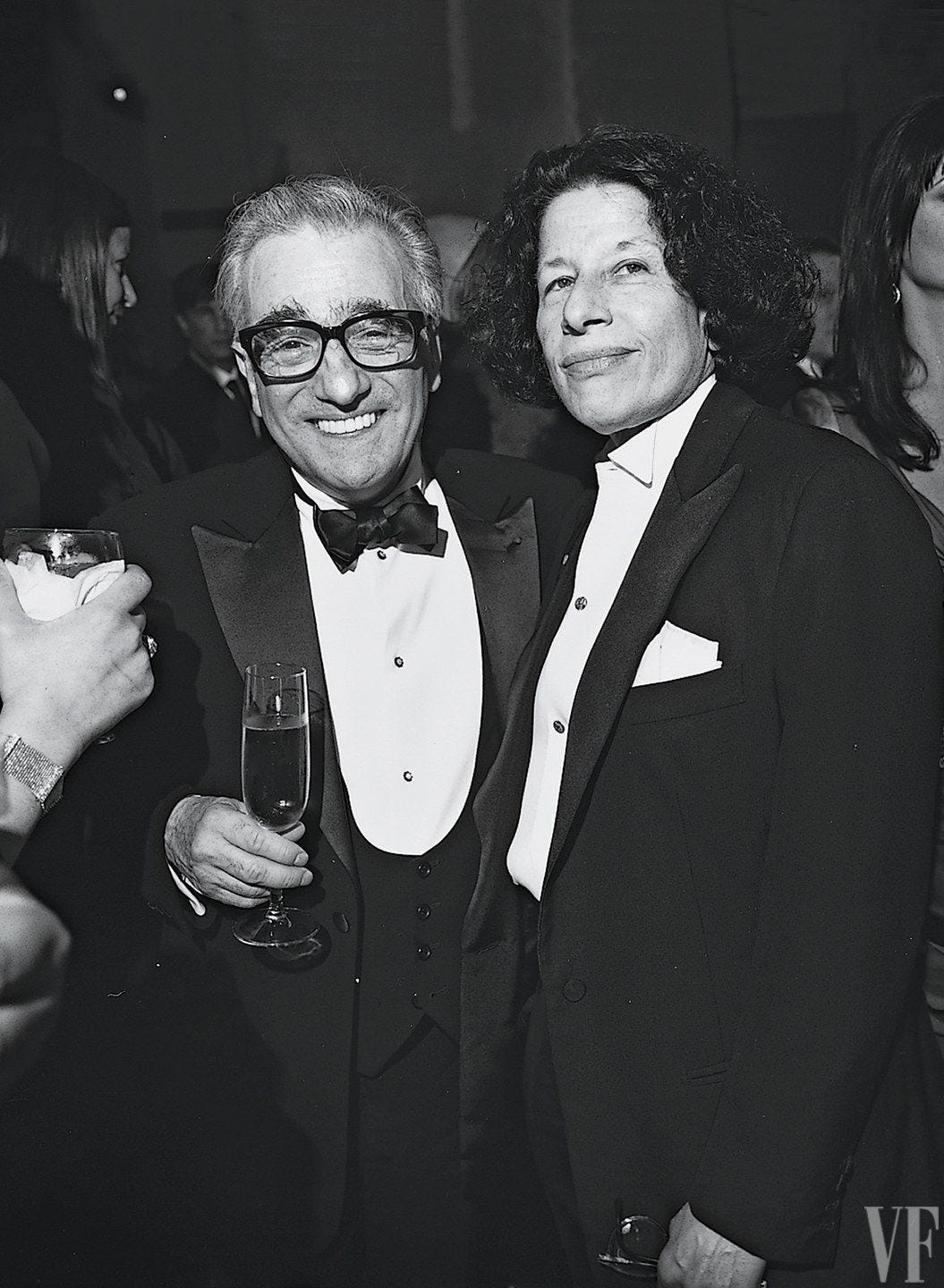
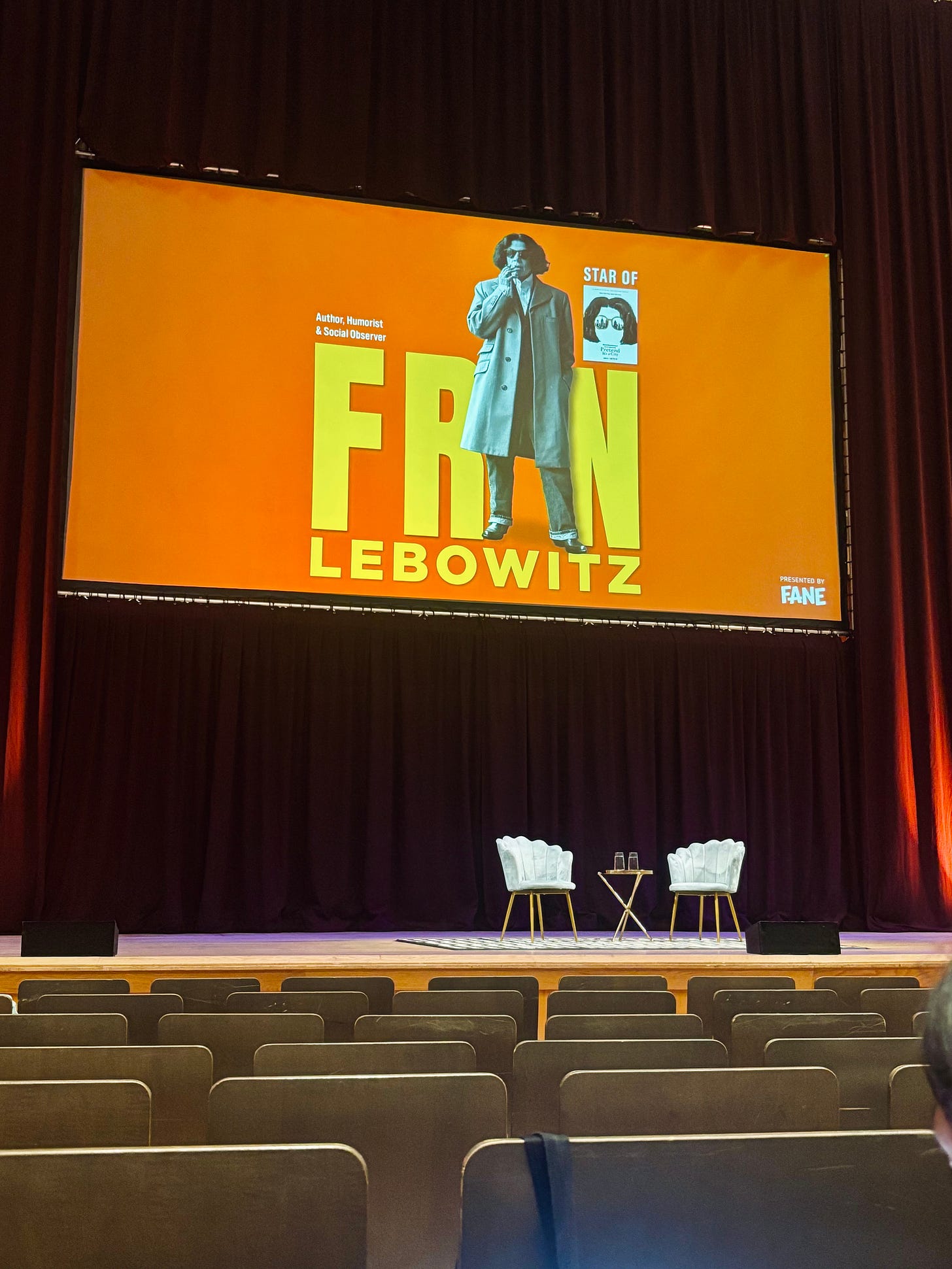
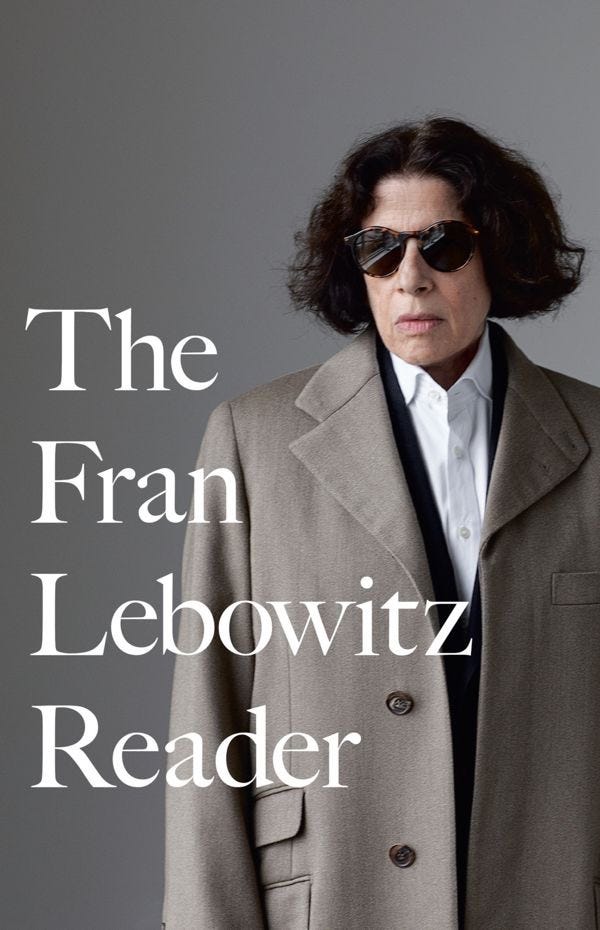
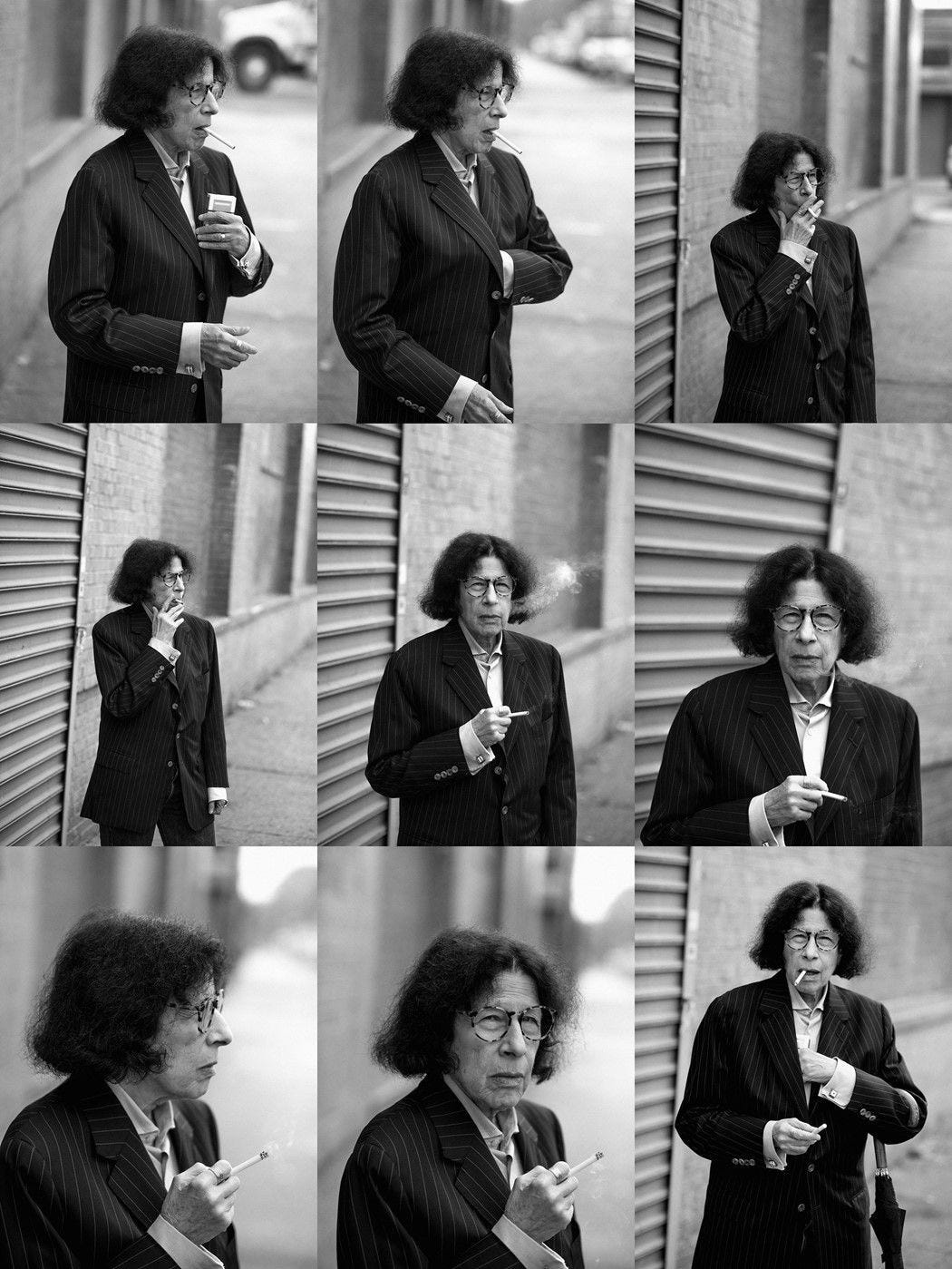
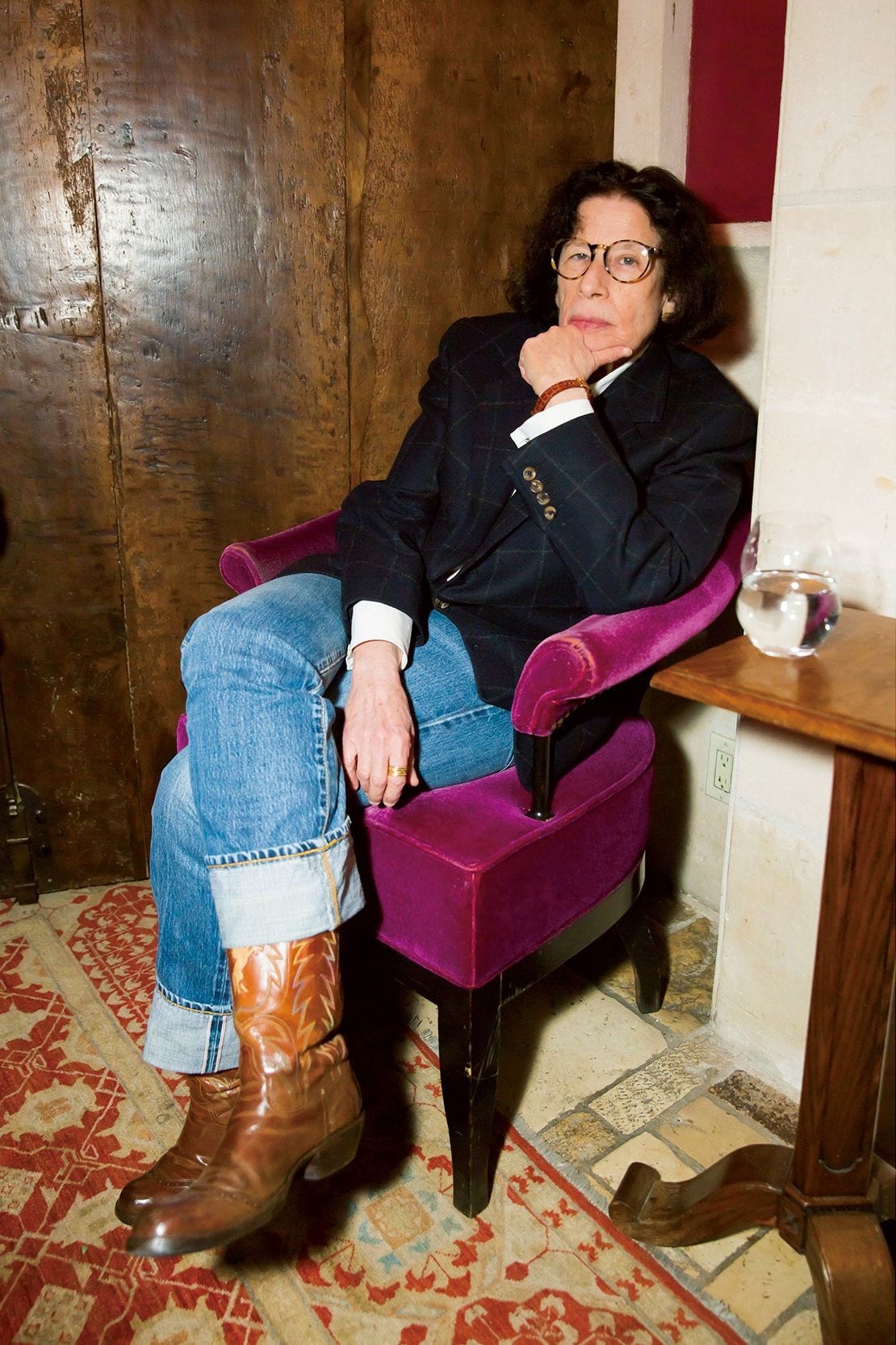
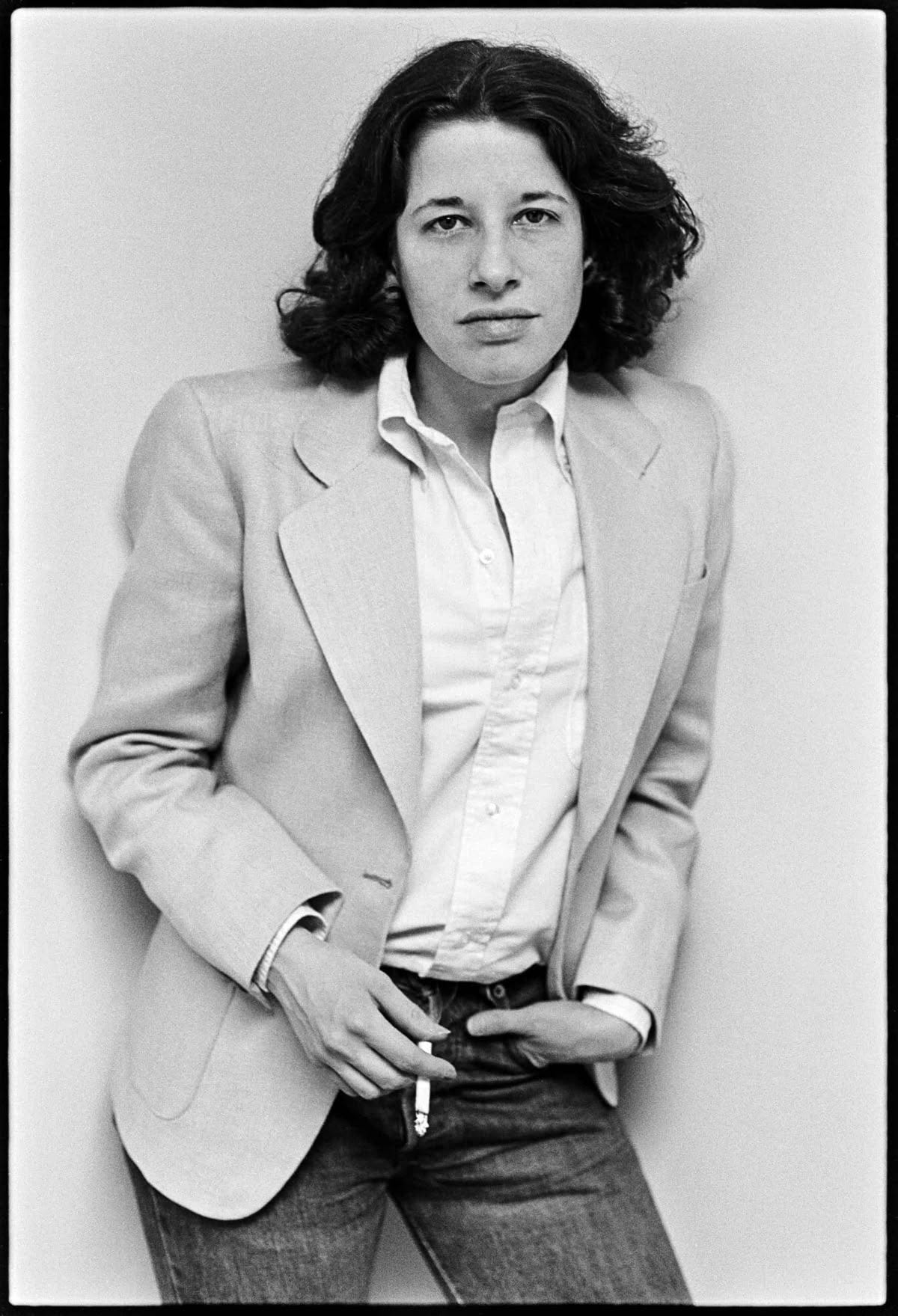
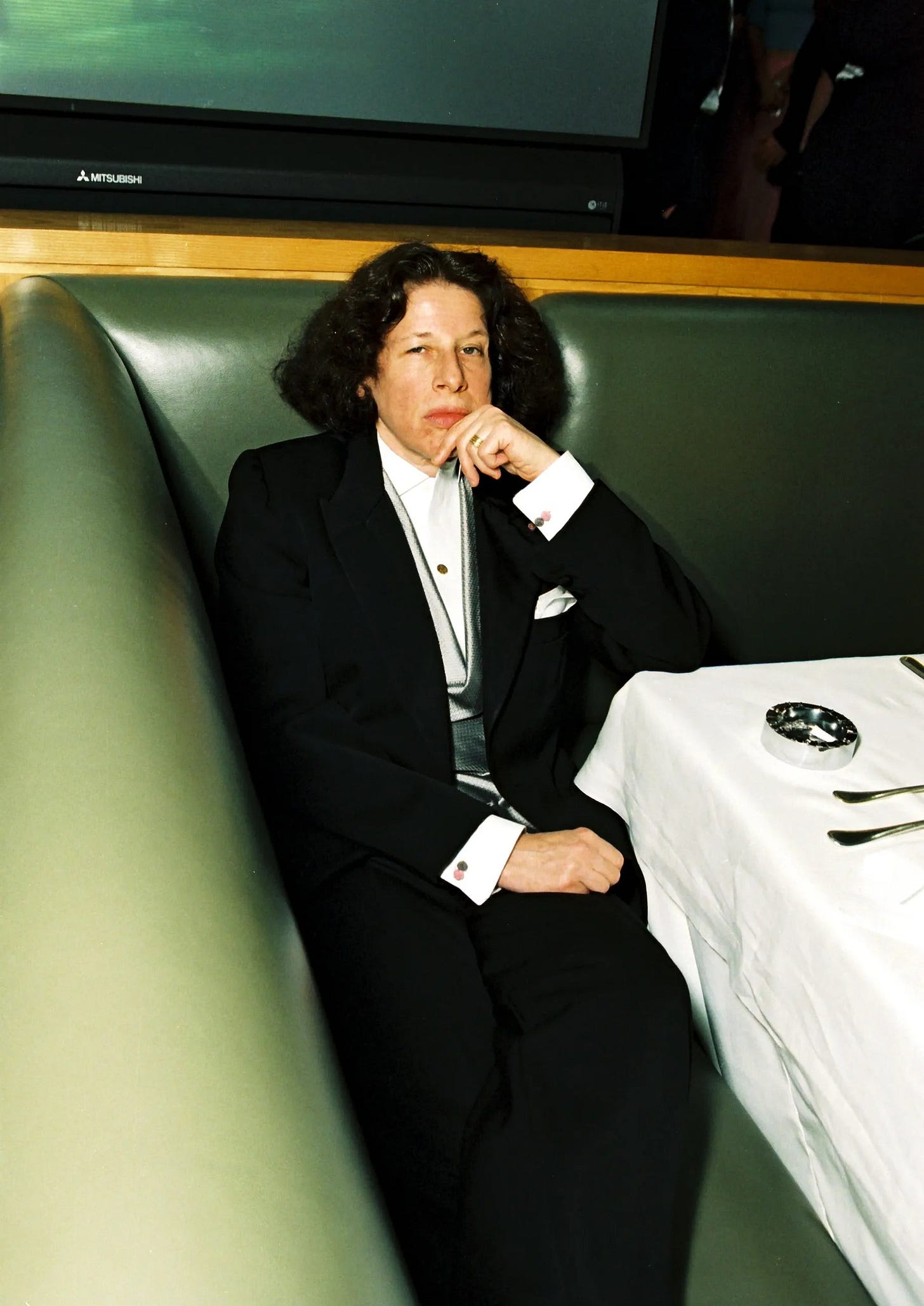
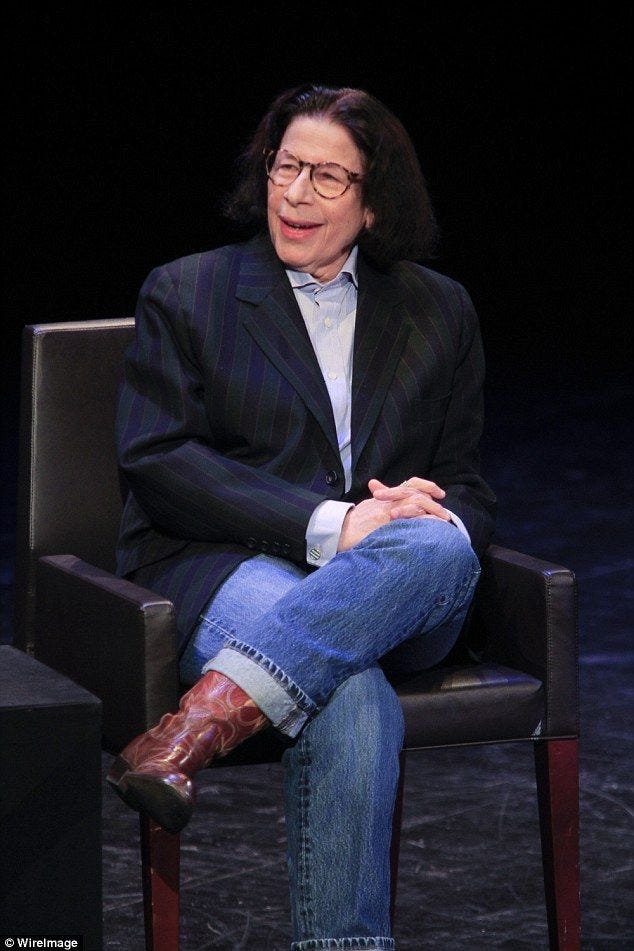
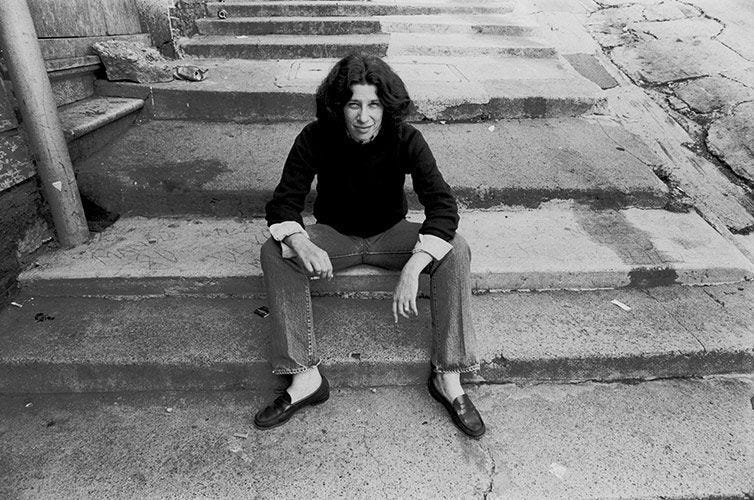
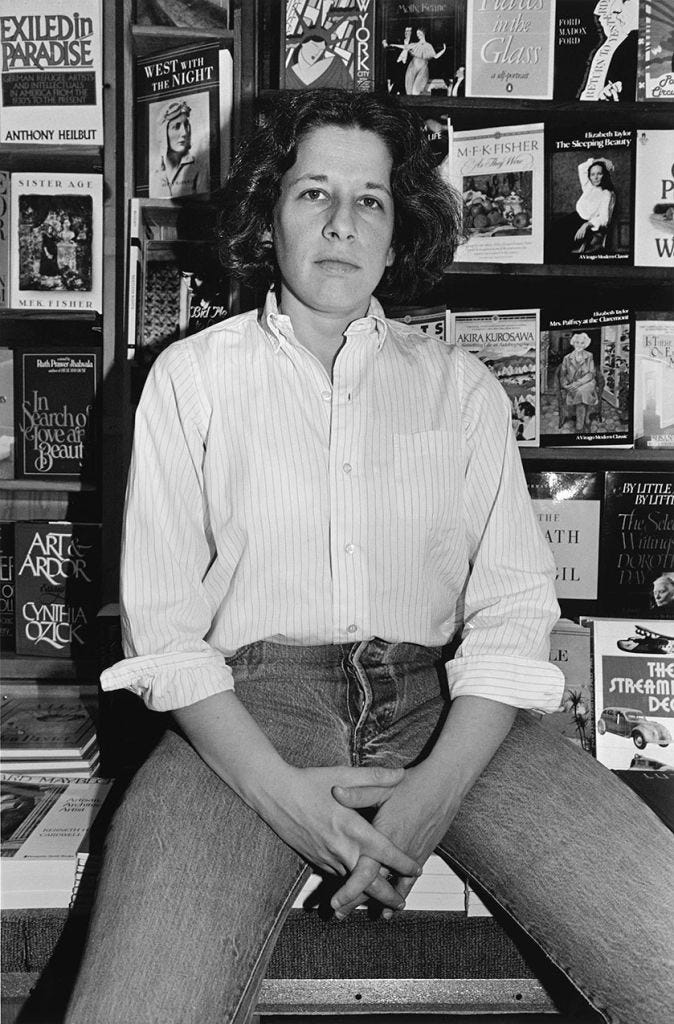
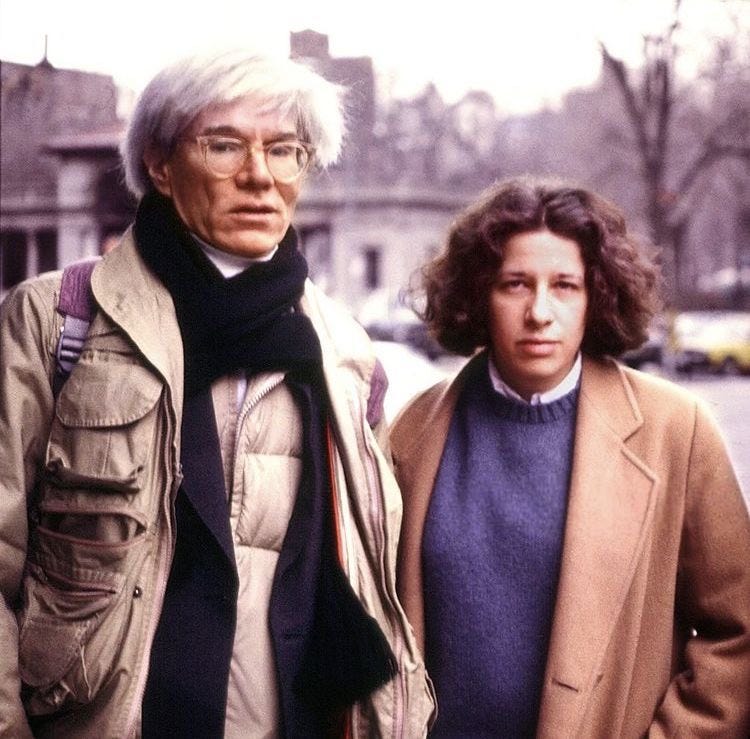
I think I'd cease up if I saw Fran strolling in NYC - peak icon! (Although she'd probably hates being called one)
Must check out the Netflix series, thanks for the heads up on that one Tom.